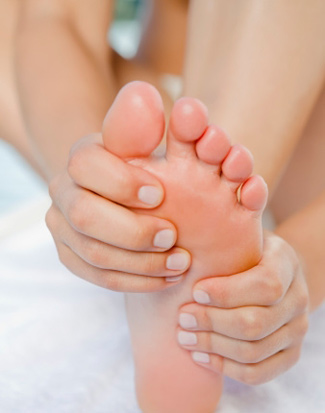
06 Mar Treating Nail Fungus

Toenail fungus plagues about 12% of Americans. Some are genetically prone to getting it; and therefore will probably get it again despite the best of treatments.
Nail Fungus
In medicine, just as in life, things are not always what they appear to be. Chances are that if you have a funky looking or off-color toenail, someone has helpfully informed you it is fungus. If they are very helpful, they even mentioned that your doctor has a pill for it. The cause of distorted nails is myriad. We see frustrated patients who have been shelling out co pays for medications but just “can’t seem to get rid of this fungus!”
Toenail fungus plagues about 12% of Americans. Some are genetically prone to getting it; and therefore will probably get it again despite the best of treatments. Going barefoot, being an athlete, and having a weak immune system are other risk factors. Fungi love warm dark moist places, be it old rotting logs in the forest or your earthy smelling sneakers.
Nail Fungus Treatments
The American Academy of Dermatology recently launched an effort to dissuade patients from choosing ineffective and potentially harmful dermatological therapies. The blind treatment of presumed nail fungus tops the list. Please insist that your doctor tests your nail specifically for fungal organisms before embarking upon what may be a fool’s errand. Even if fungal organisms are positively identified, the prescription pills only kill certain very select organisms. We see nails colonized with various molds, yeasts, bacteria, and even viruses.

It is critical to establish what accounts for the infection because the treatments vary widely.
It is critical to establish what accounts for the infection because the treatments vary widely. It is not uncommon to identify that infamous “Black Mold” you hear about on TV (alternaria). We also see species of the same mold that grows on the old loaf of bread in your refrigerator (penicillium). Even the mold that some medical historians hypothesize accounted for King Tut’s Curse (aspergillus) shows up uncommonly on samples. Some strains of mold even produce antibiotics and antifungals in your nail to keep competitors off their turf. It takes specialized tests and cultures to differentiate between all these potential culprits. At the bare minimum scrapings from the nail can be examined under the microscope.
And sometimes there is no infection at all. Chronic skin conditions like psoriasis and some eczema can mimic the appearance of infections. Jogging, tennis, and soccer account of plenty of bizarre looking nails due to pivoting, repetitive impact, and blunt trauma to the nail itself.
As a testament to direct-to-consumer marketing, I once heard an older dermatologist remark that patients never complained of nail fungus until that little cartoon monster showed up on TV threatening to eat your toenails. He was referring to “Digger the Dermatophyte”, a sharp-toothed little demonic pitchman for Lamisil tablets. Digger hoisted up a toenail like the hood of car and climbed right in. “You can’t get me out with clippers or surface treatments”, he purrs to horrified viewers. Digger helped his drug company, Novartis, earn an estimated $700 million.
As doctors we all have our own favorite potions and elixirs to kill these various infections if pills have failed or unwanted. I am particularly excited about a new cream being brought to market that boasts cure rates of the pills without the side affects. This should debut next year barring regulatory issues. Lasers are being utilized for nail fungus also but usually the thousand dollar price of the treatment is not covered by insurance.
Regardless of what treatment option you chose, you will need one thing in plenty: Patience. Short of completely removing the infected nail, you are staring at months of swallowing pills or applying topical medication. Of course a little colored nail polish never hurts to improve the appearance in the meantime. But if you are looking forward to showing off a new pair of sandals this coming spring? Better get started today on your treatment.

